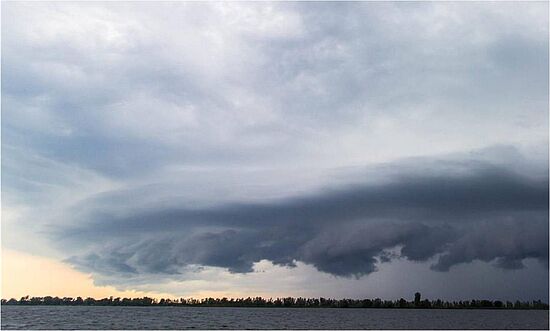Recent deep cuts to provincial natural hazards transfer payments to Ontario’s 36 conservation authorities were extremely disappointing, but not unexpected. The government was very clear ahead of time about its mission to reduce the deficit and create efficiencies.
Conservation authorities’ flood operations protect public health and safety. Flooding threatens people, their homes and their livelihoods. It costs all levels of government millions of dollars each year in damages – and that’s with a long-standing flood management program that is backed by strong watershed planning and programs. We’ve seen what is happening in other parts of Canada where there are no conservation authorities and little or late efforts to keep people from building in floodplains.
So, it’s somewhat surprising that the Province would reduce transfer payments by 50% to such an underfunded, yet critical public safety program.
Conservation authorities have been delivering successful flood management operations on frugal budgets for over 20 years. Provincial funding levels for this work have remained the same for more than 20 years. Until these reductions, it was $7.4 million per year and shared by all 36 CAs. The Province has also been providing an additional $5 million each year which is matched by municipalities and used to address the most extreme issues and major maintenance needs in aging flood infrastructure (dams, dykes etc). It’s not really enough, yet each year, conservation authorities pulled their belts a little tighter and continued to provide a solid level of service.
The provincial Made-in-Ontario Environmental Plan has many good elements and recognizes the contribution that conservation authorities make to a healthy and safe environment.
It states that the Province will continue to protect and identify vulnerable waterways and inland waters and ensure sustainable water use and water security for future generations. The Plan says the Province will work in collaboration with municipalities and stakeholders to ‘ensure that CAs focus and deliver on their core mandate of protecting people and property from flooding and other natural hazards, and conserving natural resources’. It’s unclear how provincial objectives to reduce flooding, protect water and adapt to climate change can be accomplished by reducing provincial funding support for the natural hazard program.
Protecting people from flooding requires us to conserve natural resources. A cornerstone of a successful flood program is ‘prevention’. Through their watershed planning, programs and services, conservation authorities put as much effort into preventing flooding as they do addressing them when they happen. Some of these activities include:
- identifying flood and erosion prone areas through watershed planning and doing floodplain mapping,
- planting trees and shrubs along waterways, and protecting woodlands and wetlands in order to build watershed resilience and absorb flood waters,
- preventing pollution and sediment from flood and runoff through rural water quality programs, erosion/sediment control, and stormwater management,
- reviewing development applications to reduce risk,
- acting as the ‘frontline’ partners by maintaining provincial water monitoring stations, collecting data and providing it to provincial programs and,
- educating people about how to prevent flooding.
As a result, the impacts and costs of flooding are reduced, people are protected and we’re able to track and adapt to climate change. We’re protecting water and land resources for future generations.
We think that’s worth a sober second thought about future support for conservation authorities.
Author:Conservation Ontario
